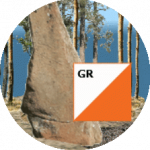Search the Community
Showing results for tags 'Speed'.
-
In this game you will use your special costume which allows you to transform into mechanical objects (Car, Rocket, Helicopter, Magnet, Motorcycle, ...) to avoid obstacles, collect Vortex Gems in levels and defeat the Assas (The bad guys who want to destroy the world). The Multiplayer mode allows you to participate in world championships with other players. With this game you will always discover a new way to have fun! Game link: • Web (HTML5) version (Gamemonetize.com) • Android version (Google Play)
-
Hello, I am experiminting with the Virtual Joysticks Camera and I have a scene that is relatively large. when I use the left joystick to move the camera it moves really slow, I can't figure out how to change the speed of the left joystick. The right joystick(camera rotation) rotates just fine. Thanks for the help!
- 9 replies
-
- virtualjoystickscamera
- speed
-
(and 2 more)
Tagged with:
-
I have recently discovered a couple of useful pages about improving the speed of canvas operations. I will give links to those pages at the bottom of this item but first let me describe a good speed-up I got as a result of reading them. In my program The Forest (myforest.uk) I am continually looking for ways to improve the speed of drawing scenes. I have made several improvements already but this new one is very useful indeed. I have a Scene object with method draw() which is invoked whenever the observer moves or turns. From its earliest incarnation this method has reported how long it takes, so I can monitor what is going on. Its first line is var t0 = new Date ().getTime (); // ms and its last line calculates a difference and displays it in a status line on the HTML page: var dt = new Date ().getTime () - t0; forest.infoDiv.innerHTML = me.toString () + ", Drawn in " + dt + "ms (" + this.nDrawIms + " images)"; I have augmented that so that the constructor of forest.scene includes this.drawingTimes = ''; and a new final line at the end of draw(): this.drawingTimes += dt + '<br>'; I can cause drawing of the same scene over and over again by clicking a button labelled 'Look level' (as opposed to up or down buttons which would draw a slightly different view of the scene). This means I can build up a long string of forest.scene.drawingTimes. Then in a testing version I can press an otherwise unused key to dump those times as the innerHTML of a div in my HTML test page. The <br>s mean that I get a vertical column of values which I can then select, copy and paste into a spreadsheet (I use OpenOffice). Then it is easy to get the mean and standard deviation of the column. I did that twice for a large number of values. First with my last released version of The Forest and then with a tiny enhancement so that just before every time drawImage(im, x, y, width, height) is called I do this: x |= 0; y |= 0; Those are bitwise OR operations and their effect is simply to chop off the fractional parts of the screen coordinates x and y. This means that drawing starts on an exact pixel and does not require interpolation. The results: without the truncation (ORing) the mean time was 140.9ms with a standard deviation of 35.3ms; truncated the mean was 85.7ms and standard deviation 23.7ms. That is a very significant and useful improvement, so it will be going into my next version. The scene drawn here involved 1,693 calls to drawImage(), scaling each image (tree, ground, and other features) differently each time. From this big improvement I deduce that once drawImage() starts on an integer pixel then it uses integer pixels in the destination to decide where to get pixels from in the original image for scaling. In hindsight this is rather obvious really but I thought it would be useful to others to see how I went about proving the effect. I have noted before in this forum that the drawing time varies quite widely (as shown by the standard deviations) and I still attribute that to the workings of the garbage collector in the background. I should also point out that so far I have only measured this in FireFox. If you want to see more clearly what I am taking about, The Forest is at www.myforest.uk - from the initial map use the button (or key) to go to the scene. The pages which prompted this are: https://developer.mozilla.org/en-US/docs/Web/API/Canvas_API/Tutorial/Optimizing_canvas https://www.html5rocks.com/en/tutorials/canvas/performance/
-
- javascript
- canvas
-
(and 2 more)
Tagged with:
-
Hello guys, I use the UniversalCamera in my project. On my mobile device it works really well and does what I want it to do, except for the left and right rotation. When I wipe up and down, the camera moves much faster than left and right. I have already tried the camera. angularSensibility, but it has no visible effect. for example, if I use the Gyro camera and press on the screen, I can control the camera very well and would like to have such a behaviour with the UniversalCamera. Did I miss something or is there a value I need to adjust? I would like to double the speed of mobile devices (the device differentiation is already taken over by my framework). Then it has a smooth user behavior. I look forward to your answers. :-)
-
I'm aware that the client's computer GPU might affect the game's performance (smoothness and freezing). But the game I'm creating now is being affected differently. The client's GPU is literally affecting his player movement speed globally (even on the other player's views, not only locally for him). If you check other .io games like agar.io and diep.io, even with a slow computer, you will notice that the player movement speed is is the same (based on the same player level). It skips a few frames and it isn't smooth at all. But the movement speed is the same. Every player on my game needs to have the same movement speed (that's one of the most important features of my game). I've also noticed that if I'm using the maximized window, the game slows down. But if I use like half browser screen, it comes back to being fast again: https://gyazo.com/59b72ae5d9e2d3e9611a41e9ac8a3f39 It wasn't supposed to happen. If you need further information from me, please let me know. Please help. Thanks in advance.
-
Hi! I made a small fun game with all cryptocurrencies - https://catch.cryptland.com Need to click on any coin in 60 seconds, while it is moving around. Remember to check Ranking after your score submitted. If anybody has something to say about this fun game, I will be very grateful. Thanks
-
I am making a platformer game which I have implemented a weapon fire method to shoot some projectiles. I find that I am unable to fire these projectiles along the X axis rather than the Y. Here is a that section of the code within the create function: weapon = this.game.add.weapon(1, 'bullet'); weapon.bulletKillType = Phaser.Weapon.KILL_WORLD_BOUNDS; and the code within create for the bullet: if(this.cursors.down.isDown){ weapon.bulletAngleOffset = 90; weapon.bulletSpeed = 300; weapon.x = this.fNobleRanger.x; weapon.y = this.fNobleRanger.y; weapon.fire(); } The projectile is firing from my desired sprite, however the projectile shoots up and then falls back down. I want to shoot the projectile along the X axis instead. Any tips? I am silly. Found out about fireAngle, but to further this question: is it possible to have this item not be affected by game physic gravity?
-
Hello everyone, I just upgraded my project from Phaser CE to Phaser 3 (latest beta) and I noticed that framerate has dropped down dramatically. I know that version 3 is using custom renderer and not Pixi, but as I understand, the WebGL version should have similar performance as the original Pixi renderer. I have just a single isometric scene with 64x64 tile sprites, every sprite is 80x40 and there are 128 single textures. Before upgrade, I got solid 50-60 FPS, now I can barely move the camera without FPS dropping under 15 FPS. Has anyone actually tested the rendering performance of Phaser 3? Thank you for any hint, Have a nice day, Max.
-
I had a huge loading performance a couple days ago. I have gotten past it now but it seems like something you should know about. I was trying to load a *lot* of meshes, say up to 20,000, and ran into a serious wall below that. The time for the first render completion was over a minute. I did the most practical thing, hit pause a few times to see what the system was doing. My system was spending all of its time in a FOR loop in Material.prototype._markAllSubMeshesAsDirty. (Attach 1) getScene().meshes is all of my meshes, so this was a long FOR loop. The plot thickens because it was a downstream side-effect of another FOR loop Scene._evaluateActiveMeshes. This FOR loop was also the length of all of my meshes. So, my first render was blocked by an n-squared algorithm that evaluating dirtiness. Lots and lots of dirtiness. I got past this with a hack, initially. I disabled Material.prototype._markAllSubMeshesAsDirty for the *first* *render* only. No ill effects. Later, I started merging meshes. Let me tell you, the mesh merging is the bomb! It changed everything for my application. Instances, yawn. Clone, snore. Merging killed it. I do 3-d graphs and there are a lot of similar meshes (everything is a hexagon, for starters). In my tests, I could reduce independent mesh count by a factor of twenty. Now I am loading 150K hexes fast and with good frame rate. I archived the original problem child at http://www.brianbutton.com/chart3d/carthagevirgin.html
-
Hello, I'm having a bit of trouble working out how I can dynamically change the animation speed, while still maintaining the current frame the animation is up to when I make the change. See demo here http://www.babylonjs-playground.com/#IBU2W7#2 When the speed changes I would hope that the current frame was not affected, so I can ramp down to a period of slow motion then resume back to normal speed I suspect I might be mutating the wrong variable to change the speed, but I can't work out what might fix it
-
I am trying to fix the speed and framerate for Link if someone have any idea for doing computations, speed = function(framerate) for example Here is the code : http://codepen.io/featuresmega/pen/ALKLEj var game; var map; var layer, layer1, layer2; var player; var cursors; game = new Phaser.Game(800, 600, Phaser.CANVAS, 'Zelda Mysteries of PhaserIO', { preload: preload, create: create, update: update, render: render }); function preload() { game.load.tilemap('zelda', 'http://crossorigin.me/http://asciimulation.link/assets/tiles/zelda.json', null, Phaser.Tilemap.TILED_JSON); game.load.image('tiles', 'http://crossorigin.me/http://asciimulation.link/assets/tiles/light_world.tiles.png'); game.load.spritesheet('link', 'http://crossorigin.me/http://asciimulation.link/assets/sprites/walking.tunic.png', 24, 32, 55); } function create() { //World map = game.add.tilemap('zelda'); map.addTilesetImage('light_world.tiles', 'tiles'); currentTile = map.getTile(2, 3); layer = map.createLayer('Calque de Tile 1'); layer = map.createLayer('Calque 2'); //Player player = game.add.sprite(50, 150, 'link'); player.scale.set(2); player.smoothed = false; player.animations.add('right', [0, 1, 2, 3, 4, 5, 6, 7], 20, false); player.animations.add('up', [12, 13, 14, 15, 16, 17, 18], 8, false); player.animations.add('left', [33, 34, 35, 36, 37, 38, 39, 40], 8, false); player.animations.add('down', [44, 45, 46, 47, 48, 49, 50, 51], 8, false); game.physics.enable(player, Phaser.Physics.ARCADE); game.camera.follow(player); cursors = game.input.keyboard.createCursorKeys(); } function update() { player.body.velocity.x = 0; player.body.velocity.y = 0; var speed = 200; if (cursors.right.isDown) { game.camera.x += 4; player.body.velocity.x = +speed; player.animations.play('right'); } else if (cursors.up.isDown) { game.camera.y -= 4; player.body.velocity.y = -speed; player.animations.play('up'); } else if (cursors.left.isDown) { game.camera.x -= 4; player.body.velocity.x = -speed; player.animations.play('left'); } else if (cursors.down.isDown) { game.camera.y += 4; player.body.velocity.y = +speed; player.animations.play('down'); } else { player.animations.stop(); } } function render() { game.debug.spriteInfo(player, 20, 32); }
-
Rival Rush Game Link: Rival Rush Game Link Available for non-exclusive licensing! Open to constructive criticism.
-
Hello, Don't know if it is a bug but players with different FPS move by different speed. I use FreeCamera. I have got 60 FPS and I move about three times slower then other player with 20 FPS. That's weird because players with lower FPS should move slowly. I guess there is some speed compensating code. Also if player is for some time in another browser window and switch to game immediately holding move button he move for a while by huge speed. Sorry for my English. Thanks!
-
Does Babylon has any compression of .babylon file and assets? Or it doesn't. And we should enable gzip compression on server settings. Is this the only solution to compress assets and all other resources to server client our babylon.js game? greetings ian
- 4 replies
-
- babylon.js
- babylon
-
(and 4 more)
Tagged with:
-
Is there a big efficiency difference, in terms of game speed/smoothness and memory usage between using a small png for entities sprites VS using a big png and scaling it down with javascript ingame?
- 7 replies
-
- efficiency
- png
-
(and 3 more)
Tagged with:
-
Hello! I have a tween animation: var speed = (playerInfoObject.engine.speed != null) ? playerInfoObject.engine.speed * 15 : 0;var tween1 = game.add.tween(myShip).to({ x: galaxyGate.x, y: galaxyGate.y}, speed, Phaser.Easing.Linear.None, true);This is an animation for a ship movement For example: I have a big tileSprite (space). When the tween starts in different points of this tileSprite the ship's speed is different too. I need to make it the same from all it's starts points. I have already tried smth. but that didn't help me =( var position = {x: myShip.x, y: myShip.y}; var target = {x: galaxyGate.x, y: galaxyGate.y}; var speed = 5000; var counter = 0; var timePrev = Date.now(); var tween = game.add.tween(myShip) .to(target , speed) .onUpdateCallback(function(){ myShip.x = myShip.x; myShip.y = myShip.y; counter++; if(counter === 100){ tween.stop(); var timeNow = Date.now(); var timeDiff = timeNow - timePrev; speed = speed - timeDiff; tween.to( target, speed) tween.start(); } }) .start();Thank you in advance!!!
-
So how can I set random speed for every object, so the acquired speed will stay? Now I have defined speed as constant, but it also increases the speed of every object. SPEED = 3; this.enemies.forEachAlive(function(enemy){ enemy.body.velocity.x += Math.random(SPEED + (SPEED/2)); }); I tried first with Tanks -example style, where is defined max and min speed, but i didn't work.
-
Hi guys, After several months and tens of hours of work I released the v2 of my first game PAWs! Some of the new key features I’ve added: - Ten new cool characters that can be unlocked for FREE. Each character that you unlock comes with one or more extra lives. - I've replaced the numbers and signs with shapes for a better visibility and also because some people don't like numbers. - I’ve changed the rewards system to just hearts (that fill the health bar) and stars (which give x2 bonus for a limited time). I think it's less confusing this way. - I’ve replaced most of the sounds with cooler ones. - Full menu makeover. - Lots of optimizations. - Made game much more intuitive. Website: http://playpaws.eu/ Google Play: https://play.google.com/store/apps/details?id=eu.roninmobile.paws App Store: https://itunes.apple.com/us/app/paws!-live-to-purr/id989570749 Any feedback will be highly appreciated! Thank you!
-
Hi all! I'm coding a multiplayer game with server verification and the first thing you need when doing so, is a deterministic environment. And my issue is that velocity seems not to be even remotely reliable... I made a sandbox to illustrate my issue : http://phaser.io/sandbox/edit/vLcJZUDX You can see that from frame to frame, the delta x (in px/s) is really different. I could set the x and y myself (without using velocity), but then I would loose the collision detection, which I want to use, of course. Am I using velocity wrong? Is my sandbox poorly done? Thanks a lot guys!
-
Hi All, Just finished a new game, Colour Match is a simple colour matching arcade game,built using PhaserJS. The game is simple, change the tile colour to match with the falling square. Suggestions and comments are welcome. Link: https://play.google.com/store/apps/details?id=com.horizonicblue.colourmatch This is my first game on Google play store. Play, Rate and Share the game, Have fun!!
-
Speed the Card Game Description: Speed a card game also known as Spit or Slam, is very fast-paced multiplayer card game. This game supports a live online multiplayer mode.. http://jimmyinteractive.com/games/Speedhtml/ Features: Online 2 player modeComputer playersLocal 2 player mode100's of achievements Tech: PhaserSocket.IO (server) Platforms: iOS, Android, Amazon, Windows, Facebook (web) Store links: All links: http://jimmyinteractive.com/speed/ Twitter: https://twitter.com/jamesfdickinson Community: https://www.facebook.com/pages/Speed-Card-Game/847181962036765 iOS: https://itunes.apple.com/us/app/speed-the-card-game/id914247866 Android: https://play.google.com/store/apps/details?id=com.jimmyinteractive.speed Facebook: https://apps.facebook.com/speedthecardgame/ Windows (not Phaser yet, soon): https://www.microsoft.com/en-us/store/games/speed/9wzdncrfj2sd
-
I have 2 bouncing balls which are bouncing off world borders and also off each other. The balls do maintain their speed when bouncing off the world borders but they lose their speed when bouncing off each other. I'd like them to maintain their speed after they collide with each other. I realise this is quite against the physics but is this doable? Here it the game implemented with p2 physics http://finspin.github.io/bubble-game/version-2/ and the code below. And here is the same game implemented with arcade engine where balls are bouncing without losing the speed http://finspin.github.io/bubble-game/version-1/. I switched from the arcade engine to p2 after I learned arcade can't handle collision of circular objects. var game = new Phaser.Game(480, 640, Phaser.AUTO, 'Bubble Game', { preload: preload, create: create, update: update, render: render});var b1, b2, bubble1, bubble2;function preload() {}function create() { game.stage.backgroundColor = "#000"; game.physics.startSystem(Phaser.Physics.P2JS); game.physics.p2.setImpactEvents(true); var bubbleCollisionGroup = game.physics.p2.createCollisionGroup(); game.physics.p2.updateBoundsCollisionGroup(); b1 = game.add.graphics(); b1.beginFill(0xFF0000, 1); b1.drawCircle(0, 0, 50); bubble1 = game.add.sprite(game.world.width - 380, game.world.height - 50); bubble1.addChild(b1); bubble1.anchor.setTo(0.5, 0.5); b2 = game.add.graphics(); b2.beginFill(0xFFFFFF, 1); b2.drawCircle(0, 0, 50); bubble2 = game.add.sprite(game.world.width - 245, game.world.height - 50); bubble2.addChild(b2); bubble2.anchor.setTo(0.5, 0.5); bubbles = game.add.group(); bubbles.add(bubble1); bubbles.add(bubble2); game.physics.p2.enable(bubbles); bubbles.forEach(function (bubble) { bubble.body.setCircle(50); bubble.body.setCollisionGroup(bubbleCollisionGroup); bubble.body.collides([bubbleCollisionGroup, bubbleCollisionGroup]); }); var bubbleMaterial = game.physics.p2.createMaterial('bubbleMaterial'); var worldMaterial = game.physics.p2.createMaterial('worldMaterial'); bubble1.body.setMaterial(bubbleMaterial); bubble2.body.setMaterial(bubbleMaterial); game.physics.p2.setWorldMaterial(worldMaterial, true, true, true, true); var contactMaterial = game.physics.p2.createContactMaterial(bubbleMaterial, worldMaterial); contactMaterial.friction = 0; contactMaterial.restitution = 1.0; bubble1.body.damping = 0; bubble1.body.velocity.x = 200; bubble1.body.velocity.y = -200; bubble2.body.damping = 0; bubble2.body.velocity.x = -100; bubble2.body.velocity.y = 250;}function update() {}function render() {}
-
It is using WebGL in both cases, and I have turned on "use hardware acceleration" in Firefox (latest version). I see the same difference in the mobile versions of Chrome and Firefox I made my site again from scratch when 3.0 came out, and the version of the site which uses the old Pixi still performs similarly in both browsers. Is there an acknowledged difference in Pixi 3.0's ability to perform in Firefox vs. Chrome?
-
i have create mini game with collision system on it. the game about the ball bouncing on moveable player's box. all code is working well. the problem is while i move the box and hit the ball it become faster. i want the speed stay as it what ever happen to the ball. here is my code: game.physics.arcade.enable(box);game.physics.arcade.enable(ball); box.body.immovable = true; box.anchor.setTo(0.5, 0.5); ball.anchor.setTo(0.5, 0.5); ball.body.collideWorldBounds = true; ball.body.bounce.setTo(1, 1);ball.body.velocity.setTo(150, -150); this http://phaser.io/examples/v2/arcade-physics/bounce-knock as reference, try to push the ball using the alien, it is what i mean by the speed is changing.
















